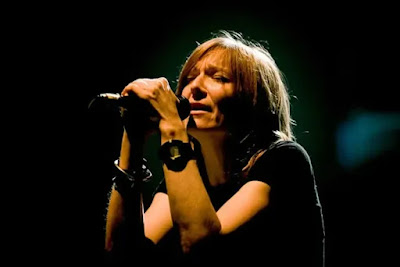Anyway, long story short: Sony Music is re-releasing this year the entire catalogue of De André, from his very first songs collected in Vol. 1 (Sony, 2024) until his last masterpiece Anime Salve (still to be re-released). For those who know nothing about Faber – as he was called after his friend and actor Paolo Villaggio – Fabrizio De André is a singer whose work can be compared to that of U.S. songwriters such as Bob Dylan and Tom Waits, without the risk of looking ridiculous.
De André himself translated in Italian Desolation Row and Romance in Durango – he was greeted with cheers by Dylan himself for translating the latter – to testify a deep link with the U.S. songwriting tradition. Moreover, he was inspired for his album Storia di un Impiegato (Sony, 2024) by the beat poet Gregory Corso, while for Tutti Morimmo a Stento (Sony, 2024), maybe the first concept album released in my country originally in 1970, his source of inspiration was the album Days of Future Passed (1967) by The Moody Blues.
Tutti Morimmo a Stento, De André first proper album after a collection of singles, deals with topics like death and sorrow: drug addiction – De André himself was an alcoholic, so the song is partially autobiographical - paedophilia, war, are only some of the subjects touched by the songwriter. The album, co-credited to Gianfranco and Gian Piero Reverberi, Riccardo Mannerini and Giuseppe Bentivoglio, is the starting point for future collaborations of De André with other artists.
If, in fact, Dylan wrote by himself all his material, Tom Waits started collaborating with his wife Cathleen Brennan after 1981 and similarly Fabrizio De André always co-created his music with other people. Someone used this habit of him to suggest De André wasn’t a proper creator, needing always other artists to rely on. But in fact, sharing creativity can be a great way not to let yourself stagnate, even because De André always greeted his co-authors openly.
Another album you might want to listen to, in these new editions, is for certainly, between the LPs still reissued, Non al Denaro, Non all’Amore Né al Cielo (Sony, 2024), inspired by Edgard Lee Master’s Anthology of Spoon River, a book translated in Italy by Fernanda Pivano, who was also a Jack Kerouac’s friend, gifted to De André by his first wife Enrica Rignon. The singer was so hit by the collections of poems that he wanted to create an album of songs from the book.
Co-written with Nicola Piovani, the album is one of the most theatrical in De André’s collection. In between there are the pure collections of songs like Vol. 1, Vol. 3, Canzoni, where the singer, as the above-mentioned Tom Waits, sings of people who lives by the wrong side of the road: prostitutes, little thieves, and all this universe of people De André was going to hang out with during his formative years in Genoa, his hometown, even if he was middle class.
Perfectly remastered – even if the previous 2002 editions were sounding great also, thanks to a 24 bit processing – and packaged in a slightly greater than the usual format if you buy CDs, while the LP have the usual dimensions, the albums are accompanied with a small booklet full of notes from De André diaries and interviews. If you love the U.S. musicians I mentioned in this article before, it would be a shame that these songs don’t touch your sensibility.
Fabrizio de André was an anarchist also, a true one, an intellectual who all of his life tried to be independent – he gave life to a farm in Sardinia in order to write only the songs he really wanted to, instead of commercial successes – but even if far from stardom he was appreciated by most famous musicians like the pop singer Mina, who covered his song La Canzone di Marinella, dedicated to a dead prostitute.
Possibly an anomaly in our cultural panorama, even if perfectly inserted in a small number of ‘songwriters’, Fabrizio De André later will experiment with ethnic instruments and structures, but maybe we will dedicate another article to him at the end of the year, when the planned re-releases will be fully available. For the moment I have given you advice of at least a couple of albums of him to fully enjoy.














